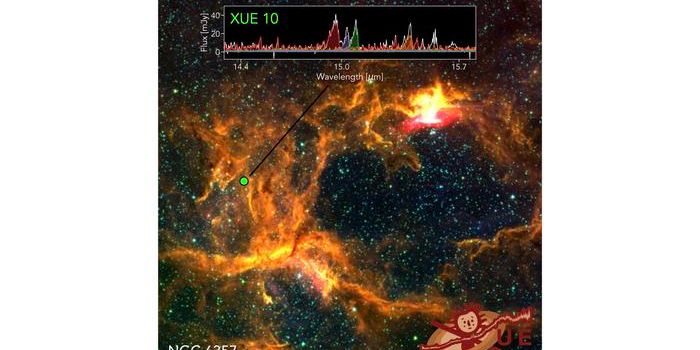Nearby Jupiter-Like Exoplanet Exhibits Unexpected Atmospheric Qualities
Residing some 325 light years away from our solar system is a hot Jupiter-like exoplanet dubbed WASP-18b. The alien world is more than ten times more massive than Jupiter and orbits so tightly to its host star that it completes a full orbit in under 23 hours.
Image Credit: NASA/JPL-Caltech
Astronomers fancied learning more about WASP-18b since first laying eyes on it, and new observations by both NASA’s Hubble and Spitzer space telescopes reveal some unexpected qualities regarding the exoplanet. The researchers published their findings in the Astrophysical Journal Letters.
Among some of the most captivating details outlined in the study is how WASP-18b is less like Jupiter than initially anticipated. While Jupiter’s atmosphere is predominantly composed of hydrogen with traces of water vapor, WASP-18b purportedly exhibits a “smothering” upper atmosphere comprised of carbon monoxide and virtually no water vapor whatsoever.
The researchers highlight how carbon dioxide isn’t likely given that most exoplanets with carbon dioxide fingerprints in their atmospheres contain water vapor too. WASP-18b's particular chemical composition spells out the recipe for a sunscreen-like layer that absorbs ultraviolet from the host star and radiates it back into space as heat, just like Earth’s ozone layer.
"The composition of WASP-18b defies all expectations," said study lead author Kyle Sheppard from NASA’s Goddard Space Flight Center in Greenbelt, Maryland. "We don't know of any other extrasolar planet where carbon monoxide so completely dominates the upper atmosphere."
Related: Hubble identifies the light-absorbing qualities of a hot Jupiter-like exoplanet
Most Jupiter-like exoplanets with protective stratospheres utilize titanium oxide as the primary absorber of stellar radiation, but WASP-18b doesn’t exhibit this property in the slightest.
The team reached their conclusion after analyzing at least seven different eclipse events exhibited by WASP-18b – the Hubble Space Telescope captured five of those, while the Spitzer Space Telescope captured two. These events, when viewed in infrared, can help astronomers identify an exoplanet’s stratospheric chemical composition.
"The only consistent explanation for the data is an overabundance of carbon monoxide and very little water vapor in the atmosphere of WASP-18b, in addition to the presence of a stratosphere," noted study co-author Nikku Madhusudhan from the University of Cambridge.
"This rare combination of factors opens a new window into our understanding of physical and chemical processes in exoplanetary atmospheres."
Related: Hot Jupiter-like exoplanet discovered inside of a triple-star system
The study underscores the possibility that WASP-18b may have formed differently than Jupiter and other similar exoplanets, but it also exposes how we still have much to learn about exoplanetary atmospheric conditions.
Perhaps future observations with NASA’s upcoming James Webb Space Telescope could offer additional insight into WASP-18b’s circumstances and answer the seemingly-endless questions relating to these types of exoplanets.
Source: NASA









